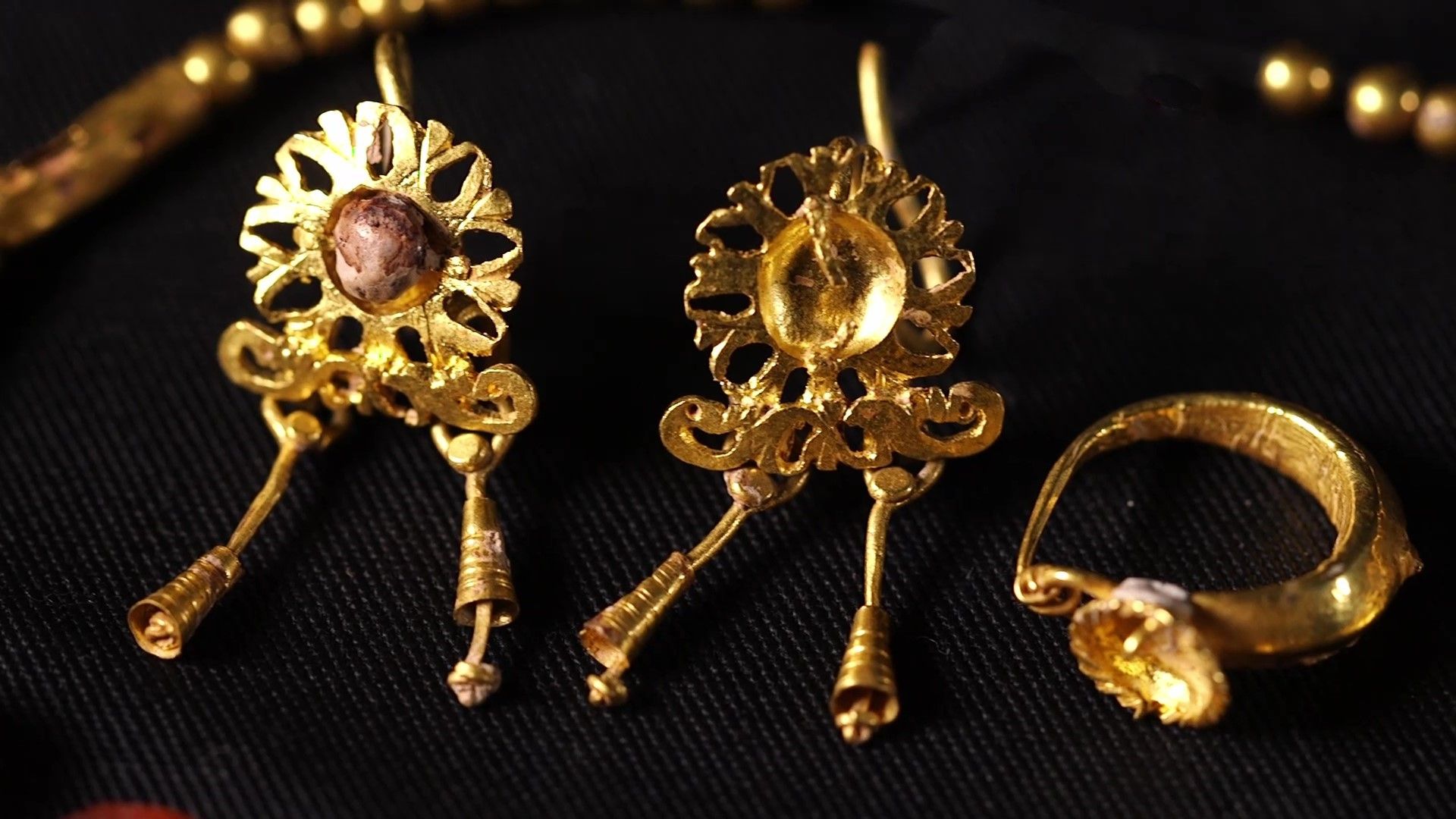This glimmering collection of ancient gold jewelry was found in an ancient burial cave near Jerusalem. Decorated with the symbol of the Roman goddess Luna, the 1,800-year-old jewelry was intended to ward off evil spirits and provide protection for a young girl in the afterlife.
The beautiful objects were first discovered over 50 years ago, but the results of the excavation were never published. Now, they will be exhibited to the public for the first time at the 48th Archaeological Congress in Jerusalem, organized by the Israel Antiquities Authority, the Israel Exploration Society, and the Israel Archaeological Association.
The lot includes gold earrings, a hairpin, a gold pendant, gold beads, carnelian beads, and a glass bead.
They were first found in 1971 inside a lead coffin at a Roman-era burial site on Mount Scopus, a mountain in northeast Jerusalem. It appears the fine objects were either placed alongside the remains of a young girl by her relatives or she was simply buried wearing the jewelry.
The gold earrings found at the site. Image credit: Emil Aladjem/Israel Antiquities Authority
“The interring of the jewelry together with the young girl is touching. One can imagine that their parents or relatives parted from the girl, either adorned with the jewelry, or possibly lying by her side, and thinking of the protection that the jewelry provided in the world to come. This is a very human situation, and all can identify with the need to protect one’s offspring, whatever the culture or the period,” Eli Escusido, Director of the Israel Antiquities Authority, said in a statement seen by IFLScience.
The jewelry is a snapshot in time of an era when this part of the world was ruled over by the Roman Empire. For a little over a century, between 6 CE and 132 CE, this area was known as the Roman province in Judea. It’s notably the period that saw the life of Jesus, as well his crucifixion, and the emergence of Christianity.
While Roman rule had a bloody and turbulent end, the culture left its influence, as evidenced by this jewelry. Some of the relics – such as the chain with a lunula pendant (pictured below) – feature the symbols of Luna, the Roman moon goddess who was often portrayed as the female counterpart of Sol, the Roman personification of the Sun.
A lunula pendant, named after Luna, the Roman moon goddess. Image credit: Emil Aladjem/Israel Antiquities Authority
The historical setting of the burial indicates that this might have been the burial site of newcomers to the city who had arrived from elsewhere in the Roman Empire, still holding onto their non-Jewish “pagan” beliefs.
The eyes of today can only guess whether this held some deep personal meaning for the family. However, the researchers believe it’s likely the jewelry was buried alongside them to protect them from bad spirits that might disturb their afterlife.
“These items of jewelry are known in the Roman world, and are characteristic of young girl burials, possibly providing evidence of the people who were buried at these sites. Late Roman Jerusalem—renamed Aelia Capitolina—had a mixed population that reached the city after the destruction of the Jerusalem Temple and the evacuation of the Jewish population,” added the researchers.
“People from different parts of the Roman Empire settled in the city, bringing with them a different set of values, beliefs and rituals. The pagan cult of the city’s new population was rich and varied, including gods and goddesses, among them the cult of the moon goddess Luna,” they continued.
Source Link: Goddess Symbol Adorns 1,800-Year-Old Gold Jewelry From Jerusalem Cave
